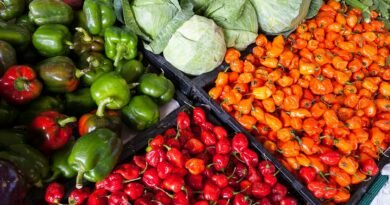Optimizing Crop Yield and Sustainability: Exploring the Power of Variable Rate Technology in Agriculture

Image: Variable rate technology
Agriculture must simultaneously feed a growing world population while minimizing environmental damage in today’s world of fast change. Precision is frequently lacking in traditional agricultural practices, which results in wasteful resource use, reduced crop yields, and more significant environmental damage. However, technological developments have given rise to a revolutionary Variable Rate Technology (VRT) strategy. With the help of this effective technology, farmers may apply necessary resources more effectively, such as water, fertilizer, and pesticides, increasing productivity, sustainability, and profitability. We shall examine variable rate technology, its advantages, and its potential to transform contemporary agriculture in this blog article.
What exactly is variable rate technology?
The term “variable rate technology” refers to the practice of modifying and changing agricultural inputs to meet the unique requirements of various fields. Farmers may accurately customize the application of resources to fit the different requirements of crops throughout their fields by utilizing cutting-edge sensors, mapping systems, and computer algorithms. Utilizing site-specific farming techniques, VRT integrates data-driven insights, precision agricultural equipment, and intelligent software tools to maximize production potential and resource efficiency.
The advantages of variable rate technology
Enhanced Productivity: VRT enables farmers to optimize inputs like water, fertilizer, and seeds while allocating resources where they are most required. Farmers may maximize production, improving crop quality, yields, and profitability by feeding crops the right quantity of nutrients to support growth.
Resource Efficiency: Using inputs consistently throughout a whole field is a common practice in traditional farming methods, which either use too many resources or not enough. By using resources wisely based on real-time data and crop requirements, VRT helps farmers decrease input waste. VRT encourages cost-effectiveness and sustainability by reducing unnecessary water use, fertilizers, and pesticides.
Environmental Sustainability: Promoting sustainable agriculture practices relies heavily on variable rate technology. VRT lessens soil erosion and environmental contamination by maximizing resource use and lowering chemical discharge. Additionally, it reduces the carbon footprint connected to agriculture, aiding in the fight against global warming.
Precision Crop Management: VRT gives farmers the tools they need to effectively control variability in their fields. Farmers may choose wisely when it comes to irrigation, fertilization, and other treatments by analyzing changes in soil composition, nutrient levels, moisture content, and other characteristics. This results in an early and well-targeted response, healthier crops, a decrease in disease incidence, and enhanced crop management in general.
Cost Savings: VRT assists farmers in reducing excessive input costs by allocating resources precisely. For example, farmers may considerably lower expenditures while maintaining or even increasing yields by optimizing the use of fertilizers. Additionally, VRT lowers operational costs and boosts profitability by using less water and chemicals.
Data-Driven Decision Making: In order to make wise judgments, Variable Rate Technology collects analyses, and interprets data. Farmers get important knowledge about the state of their fields, the health of their crops, and their overall production by combining historical, real-time, and geographic data. This data-driven strategy encourages proactive decision-making, improving operational effectiveness and allowing for well-informed long-term planning.
Variable Rate Technology Implementation
Farmers should think about taking the following actions in order to successfully utilize the advantages of variable rate technology:
- Data collection: Compile pertinent field information, such as information on the terrain, past crop yields, and soil composition. Create thorough field maps by utilizing remote sensing tools, soil sampling, and other data-collecting techniques.
- Utilise cutting-edge software tools and algorithms for data analysis and interpretation so that you may see trends and make wise judgments. Determine the fields with unique needs and possible yield differences.
- Invest in specialized machinery to implement precision agriculture equipment.
Do Variable Rate Technologies Justify the Price?
Since the introduction of VRT, farmers have questioned whether the expense is justified. It relies on the variability in your fields and crop yield, according to most agronomists and agricultural experts.
For instance, different seed rates, fertilizers, or other crop inputs might not make much of a difference if you farm land that is relatively consistent in terms of soil types, moisture-holding capacity, and geography. But there is considerable variation among several farmers’ fields.
Additionally, VRT is considerably simpler to use and more precise, leading to better outcomes and greater profitability.
How Does Variable Rate Improve Farming’s Environmental Impact?
The environmental effect of agriculture is greatly improved with VRT.
Farmers only utilize a minimal quantity of toxic chemical fertilizers and pesticides while using VRT. This indicates that less harmful greenhouse gas emissions from agricultural growing operations enter the ecosystems and environment.



